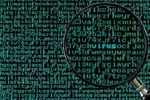
Scrutinizing Virtual Traffic
Student cybersafety capture and analysis tools protect the network
- By Angela Fortier
- Jul 01, 2011
For educational institutions, recent advances in technology have also brought problems of cyber threats, viruses, illegal music downloading and excessive bandwidth consumption. As more facilities increase their reliance on technology, the ability to monitor and trace network activity is vital to ensure both data and student cybersafety.
The Bloomington Public School System in Illinois has significant multi-directional traffic on its 98-percent-virtual network across 10 locations. Because more than 9,000 people use the school system’s resources, viruses can occasionally infect the network. One recently navigated through the antivirus software the school system had been using. The virus affected more than 100 machines in just a short time, as it accessed botnet websites and sent spam e-mails to propagate itself. Systems Administrator Jason Radford explained that Bloomington’s traditional network management tools didn’t provide insight into the virus’s path to pinpoint the source and the affected machines.
Similarly, traditional tools didn’t provide the level of detail that Michigan’s Lawrence Technological University needed to manage network traffic through 60 servers on its completely wireless campus. The university’s IT team regularly saw a lot of network noise and fluctuating system response times, making troubleshooting difficult and timeconsuming. With one of the largest wireless networks in the Midwest, the university was also concerned about enforcing security.
Additionally, Lawrence Tech’s large base of international students can cause network outages for atypical reasons, such as when they over-consume bandwidth by using a protocol not standard to the United States or an unfamiliar file program. Tim Chavis, executive director of IT services, needed a networking tool that could allow him to determine the cause of bandwidth saturation and security breech attempts.
The State University of New York at Geneseo also needed to monitor network traffic and prevent access to unauthorized sites. When the Recording Industry Association of America notified SUNY about an aggressive campaign to pursue college students who illegally shared or downloaded music, the university knew it needed detailed network analytics.
As did Bloomington PSS and Laurence Tech, SUNY found that Cisco’s NetFlow technology provided deeper insight into network traffic.
“While I was aware of NetFlow, we just couldn’t analyze the data without a supplemental technology,” said Rick Coloccia, SUNY’s network manager.
Scrutinizer NetFlow and sFlow Analyzer from Plixer International provided the detailed graphical analysis and insight that the institutions needed to isolate network threats and monitor traffic patterns. Armed with this technology, the school systems were able to combat viruses and threats, trace use of prohibited websites and isolate causes of bandwidth consumption.
After the Bloomington school system’s virus infection, Radford used the software to create reports pinpointing every infected machine, and IT “SWAT teams” were dispatched. Now he can further protect the network by denying access to sites that school policy prohibits.
Lawrence Tech's Chavis recently used NetFlow analysis tools to discover that system response times were suddenly exponentially degraded because one international student used a protocol not standard to the United States. The unfamiliar file program consumed 15 megabytes of bandwidth, leaving only 15 megabytes for 4,500 other users.
Using Scrutinizer’s functionality and unlimited automatic archiving to investigate users’ access to prohibited sites, SUNY’s Coloccia leveraged forensic data: He could confirm or deny RIAA allegations, and then either warn a guilty student severely or clear the name of a student mistakenly accused.
“Prior to implementing NetFlow, we did not have the ability go back in time to see how a certain student on the network was behaving,” Coloccia said.
In addition to the Bloomington PSS, SUNY Geneseo and Lawrence Tech, other educational facilities and businesses have recognized the benefits of using NetFlow tools to uphold network security. With automatic logging and reporting on all network traffic, businesses can now understand the detailed interactions between systems.
“Using this technology has changed our processes,” Radford said. “Through Scrutinizer, we can drill down to any type of traffic, anywhere on the network, so we can quickly provide answers to what is going on and why.”
With advances in networking, organizations need means to combat online threats, monitor student network behavior and ensure proper use of network bandwidth.
This article originally appeared in the July 2011 issue of Security Today.